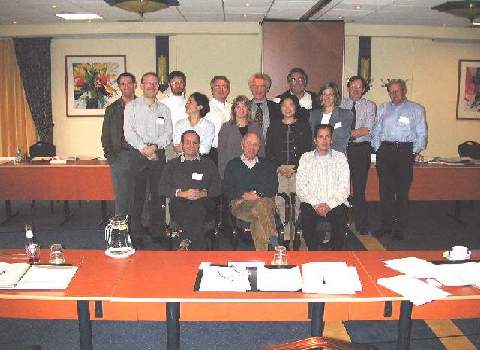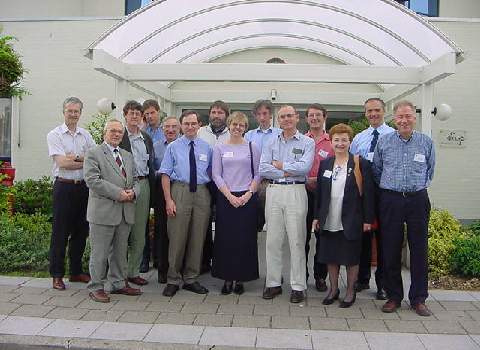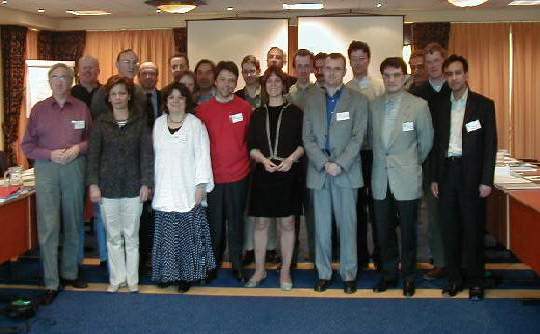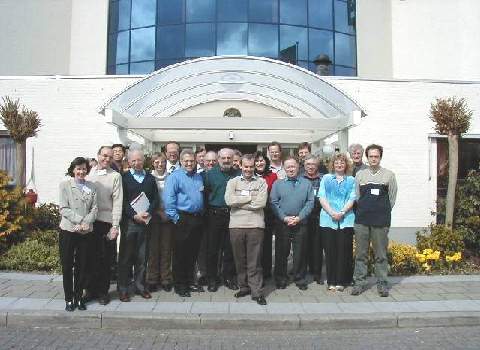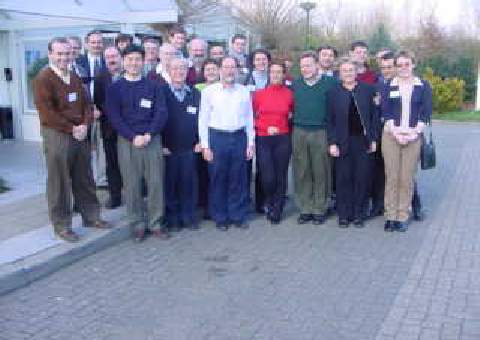The ENMC consortium on Bethlem myopathy and other diseases related to collagen type VI held its third meeting in Naarden on the 6th and 7th December 2002. This workshop was sponsored by the European Community as part of the Myo-cluster project BETHLEM.
It was attended by sixteen participants from 7 countries: Australia, France, Italy, The Netherlands, Turkey, United Kingdom and the U.S.A. The aims of this workshop were to present new insights in collagen type VI related disorders: Bethlem myopathy and Ullrich syndrome and in the molecular bases underlying these disorders. Diagnostic criteria were also discussed.
Bethlem myopathy is due to dominant mutations in COL6A1, COL6A2 and COL6A3 while a group of patients with scleroatonic muscular Ullrich syndrome (UCMD) carries recessive mutations in these genes.
The workshop was subdivided as follows:
1. Bethlem myopathy: enlargement of the clinical phenotype, description of families in which pathological, biochemical and genetic studies were performed. Correlation between the location and the nature of the mutation (genotype) and the clinical manifestations, biochemical and pathological features (phenotype).
Interestingly 50% of patients with Bethlem myopathy do not have mutations in COL6 genes suggesting the involvement of a second major gene.
2. Clinical description of families affected by Ullrich scleroatonic muscular dystrophies. Pathology, biochemistry and genetic studies.
3. There seems to be a genetic and phenotypical overlap between the two diseases giving rise to the concept of a continuum of the clinical phenotype as reported for other inherited connective tissue disorders.
4. Studies on the animal model gives new insights in the pathophysiology underlying these diseases: loss of collagen type VI causes abnormal Ca2+ homeostasis, mitochondrial dysfunction and apoptosis (cell death) in skeletal muscle.
5. Molecular diagnosis for known mutation is now available through nanotechnology that allows the analysis of many samples in only few days while molecular analysis of the three COL6 cDNAs (obtained from fibroblast cell cultures) will take a few months.
The meeting ended with the establishment of revised clinical criteria for the diagnosis of Bethlem myopathy and Ullrich scleroatonic muscular dystrophiy associated to mutations in COL6 genes.
An extended report of this meeting will be submitted for publication in Neuromuscular Disorders.
Prof. Guglielmina Pepe, Bethlem Consortium Chairperson (Rome, Italy)
Visit the website of the Myocluster Project BETHLEM at: http://www.myocluster.org

